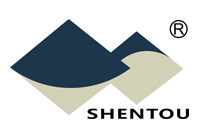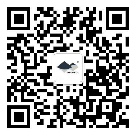CHINA AUTOMOTIVE SUPPLIER QUALITY MANAGEMENT BRIEFING
03/07/2020
Vol. 4, No. 3, March 2020

① QUALITY CHALLENGES & SOLUTIONS WITH YOUR SUPPLIERS IN CHINA
Supplier Quality Control & Management
In The Era Of Coronavirus Pandemic
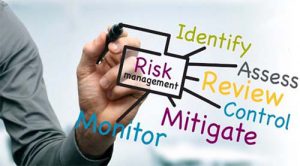 The novel coronavirus outbreak in early 2020 has brought devastating impact to China and the world. Starting from the second half of January in Wuhan China, COVID-19 has grown, spread, exploded and finally been contained within China. With the joint efforts by the government, the healthcare professionals and whole Chinese people, the outbreak is now effectively under control.
The novel coronavirus outbreak in early 2020 has brought devastating impact to China and the world. Starting from the second half of January in Wuhan China, COVID-19 has grown, spread, exploded and finally been contained within China. With the joint efforts by the government, the healthcare professionals and whole Chinese people, the outbreak is now effectively under control.
While the situation in China is gradually getting back to normal with companies reopened and workers back to their previous posts, the virus has started to quickly spread globally and exploding in several hot spots. As of this writing, Italy, the US, Spain, Germany, France, and Iran have all reported large amount of confirmed cases and deaths and governments in many areas have taken rather strict actions such as work cancellation, school closing, city lockdown, home quarantine, and work from home, in efforts to contain the spread. At the same time, China is also taking strict measures to stop the “second-wave” of the virus from imported cases.
With this new “normal”, for the international buyers of automobile spare parts who have been relying on Chinese suppliers, how to control the quality of the products being produced in China, how to manage new suppliers under development, how to inspect or audit the suppliers, and how to inspect the goods before shipments, etc., there are tough questions almost everyone is facing.
Based on Shentou’s two-decade-long experience assisting international buyers with the quality control and management of their Chinese suppliers, and in order to address the need for on-site work at different stages of the virus outbreak in China and internationally, we suggest that two models be adopted during this special period of time. With suppliers that can arrange on-site audits or quality inspections, qualified local service providers could be tasked to conduct normal audits or inspections on-site for international buyers. For those whom are not yet ready for on-site work, try to conduct remote audits or inspections now, with follow-up on-site work when the local conditions allow.
For on-site audits or inspections, bear in mind that the movements of people between different localities in some parts of China are currently still affected by the need for medical quarantine. Therefore it is critical that the service organizations international buyers work with are reasonably located in China to have the main regions strategically covered.
In China, many provinces have started to implement a “Health Code” system where people are assigned a green code for low-risk of virus exposure, a yellow code for medium risk and a red code for high risk, usually based on one’s travel records. Holders of Green codes could then travel freely within a province without going through quarantine. In the Yangzi River Delta Region which includes Zhejiang and Jiangsu Provinces, the governments have adopted cross-recognitions of the Health Codes issued by each other’s province, so that Green Code holders could move freely within the region without quarantine. A nationwide system of Health Code cross-recognition is also being implemented.
Quality control and management service organizations such as Shentou usually have local offices in supplier-rich areas such as the Yangtze River Delta Region and areas of Shandong, Hebei, Northern China and Guangdong for local on-site tasks including SQE, QA, QC and complaints handling. Therefore staff in different offices could easily work on-site at the factories within their areas, without being hampered by the need of quarantine.
For remote operations including supplier audits and quality inspections, remote communication technologies, and tools such as QQ, WeChat or Video Conferencing could be used to undertake on-line audits of document checking, questioning or observations, so that the audit evidence could be collected and complied to assess the compliance and effectiveness of the factories’ quality management systems. Remote communication technologies and tools could also be used to remotely inspect the compliance of the finished goods with the help of the supplier staff on-site.
Typically, remote audits and inspections are appropriate for factories that have been supplying consistently for a long time with good records and products that have been ordered repeatedly without quality issues. When audits and inspections are conducted remotely, it is still necessary to undertake one to two days’ on-site verifications and validations based on the audit evidence when the local conditions allow.
By Felix SS YUAN
② CRITICAL FAILURE MODES / QUALITY CONTROL POINTS IN FOCUS
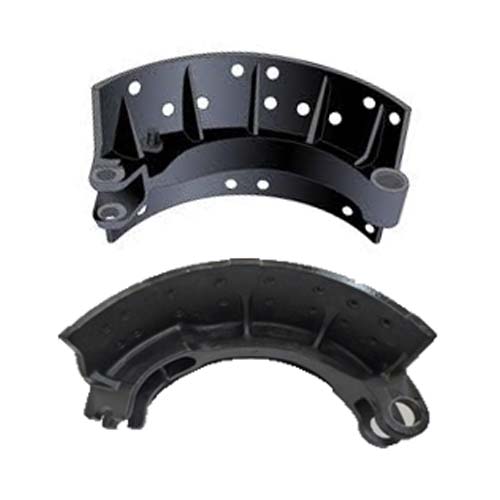
Brake Shoe
Brake shoe is the supporting part of the brake lining in the drum brake. The pedal force transmitted by the brake s-camshaft drives the brake lining on the brake shoe to rub against the rotating brake drum, generating braking force to slow down the vehicle in motion.
Brake shoes can be divided into two types based on the manufacturing technologies: casting brake shoes and welding brake shoes.
Casting brake shoes made with QT450 and HT250 materials
Primary failure modes of casting brake shoes include casting defects and perpendicularity and cylindricity not machined to specifications, resulting in side abrasion and braking failure of the brake lining. Therefore, the materials and the perpendicularity and cylindricity in machining should be strictly controlled for this type of brake shoes.
Welding brake shoes made of Q345 and Q235 materials
At present, Q345 is used as the bar rim material and Q235 as panel material for most welding brake shoes. Compared with the casting brake shoe, these materials are softer, so most of the brake shoes would have double bars to reinforce the strength of the brake shoes
The failure modes and quality control factors of welding brake shoes are much more than those of casting brake shoes.
A. The welding strength is not enough, leading to rim and wheel falling off in use. The main control method of this failure is to strengthen and fix the welding process in production and conduct destructive tests on the welding joints.
B. Issues of material strength and welding performance. Some factories use materials below the required specifications like leftover materials. Sometimes the welding surfaces are not cleaned first before welding, resulting in insufficient material and welding strength.
C. For welding brake shoes, there are also key control requirements for straightness, roundness and perpendicularity. In process design, there must be key process points for overall calibration after welding, which is also the key process for removing wilding’s internal stress. Many smaller factories don’t have this process.
By Andy RS Zhang
③ KEY CONCEPTS & PRACTICES IN SUPPLIER QUALITY MANAGEMENT
E-MARK Certification
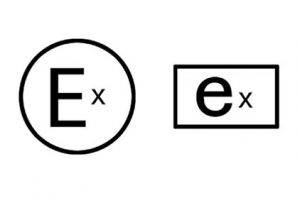 The E-mark is a United Nations mark for approved vehicles and vehicle components sold into the EU.
The E-mark is a United Nations mark for approved vehicles and vehicle components sold into the EU.
It is based on the UN agency Economic Commission for Europe (ECE) regulations. The E-mark proves that your products meet and comply with the corresponding regulation requirements.
For example, ECE Regulation 90 (“ECE R90”) is an ECE Regulation specifying the design, production, and performance requirements and test protocols for certain replacement brake products such as brake linings, pads, discs and drums, for on-road motor vehicles and trailers.
E-Mark logo is a circular frame. The number is the EU country or state number that has granted the approval. If one state grants approval then it is deemed sufficient for all other member states. For example: E1 – Germany, E4 – Netherlands, and E11 – United Kingdom.
An E-Mark is issued by a certification authority in each country, such as the Vehicle Certification Authority (VCA) in the United Kingdom.
The E-Mark certification process typically consists of product testing and conformity of production (COP) audit.
While E-Mark is a UN-designated approval, the e-Mark, a logo with a rectangular frame, is an EU mark for approved vehicles and vehicle components sold into the EU.
④ CHINA INDUSTRY & MARKET UPDATE
Cost of raw materials:
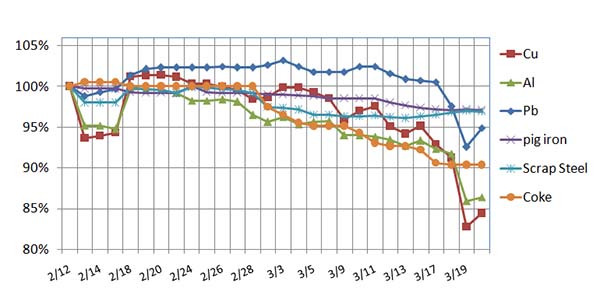
Exchange rates:
![]() USD/RMB: 1:7.0095
USD/RMB: 1:7.0095
![]() EUR/RMB: 1:7.7464
EUR/RMB: 1:7.7464
![]() RUB/RMB: 1:0.00963
RUB/RMB: 1:0.00963
March 2020
The above information is for reference only
⑤ IT HELPS TO KNOW...
COVID-19
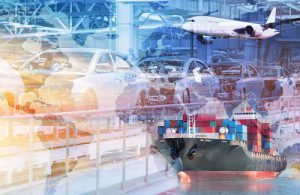 By now the novel coronavirus outbreak in China has been largely contained, but the end of the worldwide pandemic is nowhere in sight. Needless to say, almost everyone has been seriously impacted and the market is now full of anxiety and even panics.
By now the novel coronavirus outbreak in China has been largely contained, but the end of the worldwide pandemic is nowhere in sight. Needless to say, almost everyone has been seriously impacted and the market is now full of anxiety and even panics.
Based on our observations, most of the Chinese automotive manufactures are returning back to normal operations. Baring some extraordinary event, the factories should be almost fully recovered by the end of March or early April. Yet because of the on-going virus spread globally, this recovery in China is likely to face new challenges but this time not by what is happening in China but by the events in the international markets.
With the on-going pandemic, most if not all international buyers who rely on Chinese suppliers would not be able to come to China for factory qualifications or quality controls. We suggest you work out alternative solutions for these activities with your Chinese suppliers or partners during this tough period of time, because it is very likely that the worst is yet to come.
A brief note about the information of industry exhibitions in China that usually appear here:
Because of the coronavirus outbreak, most exhibitions in China in the first half of 2020 are either cancelled or postponed. We will continue to monitor, compile and publish the updated information as they become available.
SHENTOU SUPPLY CHAIN MANAGEMENT CO. LTD. is a Shenzhen, China, based company serving international automotive clients in the implementation of their China strategies and programs. CHINA AUTOMOTIVE SUPPLIER QUALITY MANAGEMENT BRIEFING is a bi-monthly newsletter published by Shentou to address the specific and unique quality challenges and concerns international automotive companies face with suppliers in China. Comments are welcome at qms@shentou.com. Click here to subscribe.
